#autonomous student network
Explore tagged Tumblr posts
Text
Also preserved on our archive (Daily updates!)
The topmost link includes a video of the news segment
By Destiny Meilleur
Medical researchers at the University of Calgary say a condition affecting autonomic bodily processes — those that occur automatically, such as heart rate, bladder function and sweating — is frequently found in people diagnosed with long COVID.
The condition is known as dysautonomia, an umbrella term for a group of related conditions. Support networks for those who suffer from it are working to raise awareness throughout October, which has been deemed Dysautonomia Awareness Month by the advocacy group, Dysautonomia International.
According to research by Dr. Satish Raj, a cardiologist and expert in autonomic health conditions at the University of Calgary, as many as 30 per cent of long COVID patients also meet the criteria for a condition called POTS, a form of dysautonomia known as “postural orthostatic tachycardia syndrome.”
According to Dysautonomia International, other studies have put the figure at between 70 per cent and 90 per cent.
The challenge is that the symptoms of the condition can be easy to dismiss. “Who likes to sit around and talk about their sweating,” notes Dr. Raj. “No one does that… These are just the background things that are useful for keeping you alive.”
Rashmin Hira, a PhD student at the Universty of Calgary and long COVID researcher, adds, “Unfortunately, a lot of people do get told that it’s just anxiety.”
That’s why raising awareness through events such as Dysautonomia Month are important, says Lauren Stiles, president and CEO of Dysautonomia International.
“(It) is one way that we help people get diagnosed faster,” Stiles says. “It’s also really important to raise awareness so that we can interest government and investors and other people to fund research in this group of diseases.”
When it comes to POTS, symptoms can include lightheadedness, nausea, blood pooling and a high heart rate. The most common treatments include increase intake of fluids and salt and, if possible, recumbent exercise.
But even if the symptoms and treatment of POTS appear subtle, it is nothing to take lightly, Stiles says. Thirty per cent of people with the condition rely on a wheelchair to get around and many others are unable to work.
“There are millions of people who really, really suffer from autonomic disorders,” Stiles says. “We want to build support and compassion for these patients in their communities so that they can get access to the resources that they need.”
Dysautonomia International is encouraging those who want to show support during the awareness month to share information with friends and family, participate in events, raise funds and wear a turquoise scarf.
#mask up#covid#pandemic#wear a mask#public health#covid 19#wear a respirator#still coviding#coronavirus#sars cov 2
15 notes
·
View notes
Text
How Does The Brain Work?
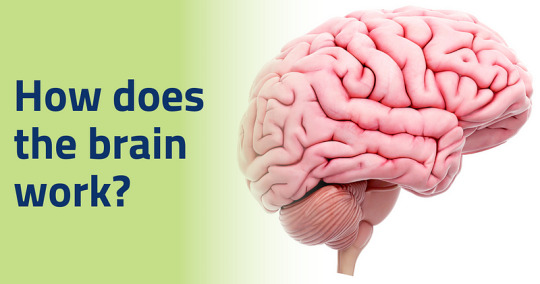
The brain stands as a marvel of biological engineering, Composing of a multitude of bodily functions ranging from cognition and memory to emotions and sensory perception. Together with the spinal cord, it constitutes the central nervous system (CNS), the command center of the human body.
Composition of the Brain
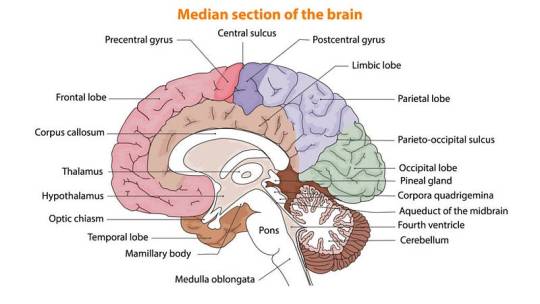
Weighing approximately 3 pounds in adults, the brain’s main structure comprises about 60% fat, interspersed with water, protein, carbohydrates, and salts. Unlike muscles, it houses a complex network of blood vessels and nerves, including neurons and glial cells.
a) Gray and White Matter
Within the central nervous system, gray matter and white matter occupies distinct regions. In the brain, gray matter forms the outer layer, rich in neuron somas, while white matter constitutes the inner section, primarily composed of axons unsheathed in myelin. Conversely, in the spinal cord, this arrangement is reversed.
b) Brain Functionality
The brain operates by transmitting and receiving chemical and electrical signals throughout the body. These signals regulate a myriad of processes, with the brain disseminating each input. Some signals remain confined within the brain, while others traverse the spinal cord and nerves, disseminating information across the body’s expanse. This composes neural network relies on billions of interconnected neurons.
Major Brain Regions and Their Functions
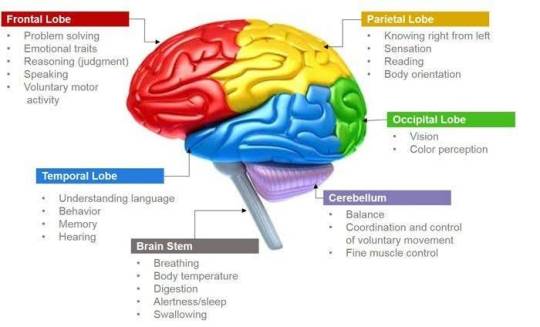
1.Cerebrum
Dominating the brain’s landscape, the cerebrum encompasses the cerebral cortex and underlying white matter. It governs a spectrum of functions, including motor coordination, temperature regulation, language processing, emotional regulation, and sensory perception.
2. Brainstem
Serving as the bridge between the cerebrum and spinal cord, the brainstem comprises the midbrain, pons, and medulla. It regulates vital autonomic functions such as heart rate, breathing, and reflexive responses.
3. Cerebellum
Nestled at the posterior aspect of the brain, the cerebellum coordinates voluntary muscle movements, posture, balance, and motor learning.
Brain Coverings
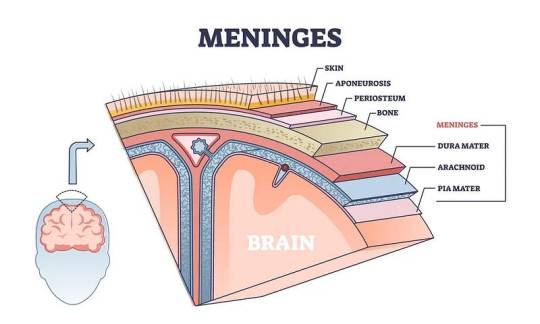
a) Meninges
Three layers of protective membranes, collectively known as meninges, enshroud the brain and spinal cord. These layers — dura mater, arachnoid mater, and pia mater — shield the delicate neural tissue from physical trauma and infection.
b) Lobes of the Brain
Each hemisphere of the brain comprises four lobes, each harboring distinct functional domains:
Frontal Lobe: Governing executive functions, motor control, and higher cognitive processes.
Parietal Lobe: Integrating sensory information, spatial awareness, and perception of pain and touch.
Occipital Lobe: Specialized for visual processing and perception.
Temporal Lobe: Involved in auditory processing, language comprehension, and memory consolidation.
Deeper Brain Structures
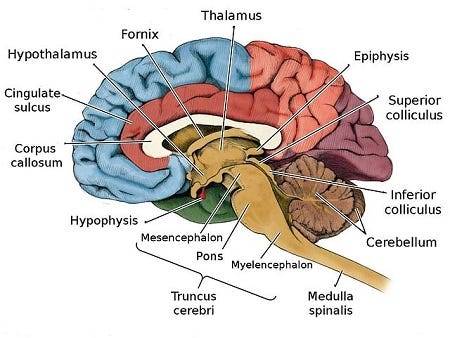
These encompass important structures such as the pituitary gland, hypothalamus, amygdala, hippocampus, and pineal gland, orchestrating hormone secretion, emotional regulation, memory consolidation, and circadian rhythms.
Blood Supply
The brain receives its oxygenated blood supply through the vertebral and carotid arteries, ensuring adequate perfusion of neural tissue. The main network of blood vessels, including the Circle of Willis, safeguards against ischemic insults and facilitates intraarterial communication.
Cranial Nerves
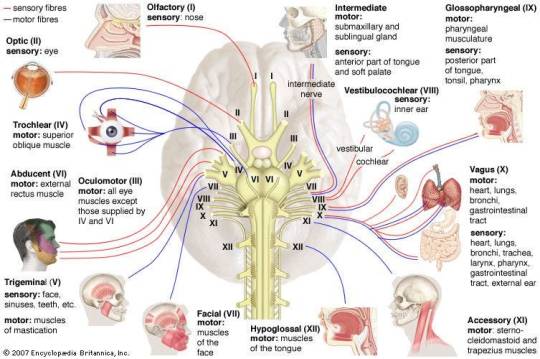
The twelve pairs of cranial nerves, originating from the brainstem, mediate a diverse array of sensory and motor functions, encompassing olfaction, vision, facial expression, and auditory perception.
Comprehending the anatomy and functionality of the brain fosters a deeper appreciation of its complexity and facilitates advances in neuroscientific research and therapeutic interventions aimed at diminishing neurological disorders.
Understanding the detailed anatomy and functionality of the brain is crucial for medical students embarking on their journey of study. Expert Academic Assignment Help offers invaluable assistance in navigating the complexities of neuroscience and related subjects. By leveraging expert guidance and support, students can excel in their medical education and contribute to advancements in the field of Medicine. Email us at [email protected] to embark on your path to scholarly excellence and professional competency.
#studying#studyblr#study blog#study aesthetic#student life#student#medical student#medical school#medicine#university student#university#university life#assignment help#medical students#nursing student#nursing school#healthcare#health and wellness#mental health#psychology#phd life#phd thesis writing service#online writing#do my online class#academic writing#essay writing#academic assignments#academia
17 notes
·
View notes
Text
"Domestically, ribu was born through the contradictions of the radical political formations of the '68 era, including the anti-Vietnam War, New Left, and student movements. Many ribu activists had experienced the radicalism of the student movements and sectarian struggles of the New Left. As defectors from existing leftist movements, ribu activists were conversant and in critical dialogue with the ongoing struggles such as those of the Sanrizuka, Shibokusa, Zainichi, and Buraku liberation activists, the politics of occupied Okinawa, and other movements including immigration, labor rights, and pollution. Following other radical movements of Japan's '68, horizontal relationality was privileged in reaction to the rigid hierarchies of the established left and many New Left sects. The movement involved a decentralized network of autonomous ribu groups that organized across the nation, from Hokkaido to Ayashi; with no formal leader, its leading activists were Japanese women in their twenties and early thirties.
Ribu's birth was traumatic and exhilarating. Having experienced a spectrum of sexist treatment and sexualized violence while organizing with leftist men, from verbal abuse to sexual assault and rape, ribu activists revolted against the myriad ways that sexism and misogyny were endemic across leftist culture. Women typically supported male leadership through domestic labor, by cleaning, cooking, and other housekeeping duties. There were instances when young women activists were referred to as public toilets [benjos] and assaulted and raped by leftist male activists. In some cases, the rape of the women of rival leftist sects became part of the New Left's tactics of uchi geba [internal violence or conflict]. In 1968, Oguma Eiji describes such incidents of sexual violence. Ribu activists spoke, wrote, and testified about their experiences of sexism, assault, and rape at the hands of leftist male activists. Given such forms of sexual violence that were hidden, too often, in the shadows of Japan's 1968, how did ribu women respond?
Never before in the records of Japanese history had ink sprayed such rage-filled declarations of revolt against Japanese heteropatriarchy and sexist men. The slogans of the movement, like the "liberation of sex and the "liberation from the toilet" [benjo kara no kaiho], unleashed an unprecedented flurry of militant feminist denunciations. With minikomi (alternative media] titles such as Onna no hangyaku [Woman's Mutiny] and art evoking images of vaginas with spikes, ribu activists raised a political banner that had never been so explicit and bold in its declaration of sexual oppression and sexual discrimination.
Ribu activists reacted to the counterculture movement of the 1960s and the sexual revolution. Some of its earliest activists, such as Yonezu Tomoko, criticized the "free love" espoused by male activists even while they emphasized the importance of politicizing sex. Along with her student comrade Mori Setsuko, Yonezu named their cell "Thought Group SEX," and painted "SEX" on their helmets the first time they disrupted a campus event at Tama Arts University in Tokyo. Sex and sexuality emerged as key concepts in ribu's manifestos for human liberation. The politicization of sex was a revolt against the sexism in mainstream society and the Japanese left. Heralding the importance of liberating sex also distinguished ribu from former Japanese women's liberation movements, Tanaka Mitsu, a leading activist and theorist of the movement, harshly criticized previous women's movements, saying that the "hysterical unattractiveness" of those "scrawny women" was due to their having to become like men. The brazen and contemptuous tone of their manifestos was a stark departure from past political speech about women's liberation.
This emphasis on sexual liberation evinced ribu's affinity with US radical feminist movements that also exploded in 1970." Ribu activists recognized their shared conditions when they heard news of women's liberation movements emerging in the United States. Information about these movements flowed into Japan via news and alternative media, as documented by Masami Saitō. Japan's largest newspapers, the Yomiuri and Asahi Shimbun, printed photos of thousands of women protesters in the streets of New York City for the August 26, 1970, Women's Strike. Anti-war posters with defaced US flags decorated the walls of ribu communes and organizing centers." Activists from the United States and Europe visited ribu centers." This cross-border exchange among activists also characterized the internationalist spirit of '68 and a common desire for liberation.
Like so many others around the world, ribu activists were also inspired by the Black Power movement and attempted to follow its lead. This passage from a ribu pamphlet evinces how ribu activists were emboldened by Black Power struggles - as were radical feminists in the United States - and drew new lines of departure and separation from the leftist men with whom they had been organizing.
By calling white cops "pigs," Blacks struggling in America began to constitute their own identity by confirming their distance from white- centered society in their daily lives. This being the beginning of the process to constitute their subjectivity, whom then should women be calling the pigs?... First, we have to strike these so-called male revolutionaries whose consciousness is desensitized to their own form of existence. We have to realize that if we don't strike our most familiar and direct oppressors, we can never "overthrow Japanese imperialism"... Those men who possess such facile thoughts as, "Since we are fighting side by side, we are of the same-mind," are the pigs among us."
For leftist women to be calling leftist male revolutionaries pigs constituted a kind of declaration of war against sexism in their midst and their newfound enemy-sexist leftist men. When women of the left began to identify this intimate enemy, this moment of dis-identification with Japanese leftist men constituted a decisive epistemic break. Their conflict with sexist male comrades forced these women to recognize that they had to redefine their relationship to the revolution from the specificity of their own subject position."
- Setsu Shigematsu, "'68 and the Japanese Women's Liberation Movement," in Gavin Walker, ed., The Red Years: Theory, Politics and Aesthetics in the Japanese ‘68. London and New York: Verso, 2020. p. 79-82
#setsu shigematsu#ribu#revolutionary feminism#feminist history#patriarchal violence#heteropatriarchy#social justice#history of social justice#militant action#far left#new left#1968#japanese 68#japanese history#left history#academic quote#reading 2023
13 notes
·
View notes
Text
Emerging Technologies
Blog Post 1
Who am I?
Hello, my name is John Perepelkin.
I am a third semester student for Information Technology Services at SAIT in Calgary. I have been enjoying the courses very much, and though it seems difficult sometimes, if I study hard I seem to do well. I have not done a lot of research into what field I want to pursue within IT, but it seems to me that I have a knack for virtualization and good skills with server management. I think though, that cypber-security is a field in extreme demand.
I am an older student, and when I was a child, computers were just becoming PC's. First one I had seen was an Apple I. Very basic. Nowadays the technology seems to almost be outpacing our ability to control it.
I have a wife and we have been married 14 years. Good timing, for this information on the blog, because we met on valentines day, and it is the 13th today. We have one 10 year old daughter, and she is kind, smart and has recently gotten her first degree black belt in tae-qwon-do.
We enjoy the outdoors and in the summer we go camping whenever possible and sometimes we travel to the U.S. or to other parts of Canada. I enjoy fishing, and just being in the great outdoors when we go out.
fin. of MY BLOG Part 1.
Blog Post 2
johnemerging
Feb 27
WHY EMERGING TECHNOLOGY IS RELEVANT
I think emerging technology is important for me, especially as I am in the IT field, and everything I work with involves technology, if the technology is new and improved from an old technology that's great. If it is a completely new technology it is important for me to understand it and how I can affect my chosen field of work.
A new technology can open up new industries, and new fields of employment. Twenty years ago, the internet and networking was taking off at an exponential rate while ten years before that, networking existed only at a rudimentary level. The new technology that had emerged that made our current social network and technological network possible was video cards. The video card enabled a computers memory and cpu capacity to be used for raw data, and the data used to create and transmit video was transferred to the new video cards. That is an example of how emerging technology has effected everyone from then, until now.
Today, the newest technology that everyone is excited, or worried about depending on your viewpoint. This of course is machine learning, or AI(artificial intelligence). From what I have seen this newest technology is in it's infancy. We have learning models that can help us in our everyday work, but these models cannot actually do anything on their own. However the applications for industries and automation seem to be very interesting, it is possible that in the future our manufacturing plants will only need an AI to run it with robots doing the 'hands-on' work. This will be possible revolution for human society, as we will a)have no jobs besides maintaining the AI and the machines, and lots of the work we do will instead be done by machines. Automation to the most extreme point possible.
These are just a few examples of how emerging technology is relevant, in fact it is extremely relevant.
johnemerging
BLOG POST 3
The New Wave of Emerging Technology
A new wave of emerging technologies is reshaping industries, communication, and everyday life. Artificial intelligence (AI) and machine learning continues to power everything from personalized solutions and autonomous systems. Quantum computing is revolutionizing data processing, and blockchain technology is expanding cryptocurrencies, and producing secure applications for finance and supply chains.
The rapid development of extended reality, includes virtual reality , augmented reality, and mixed reality. These technologies are transforming gaming, education, and even remote work, imagine the possibilities extended reality can produce for our military, industry, and advanced educational by creating more interactive experiences. Breakthroughs in biotechnology, such as gene editing and AI-driven drug discovery, are pushing the boundaries of healthcare. As these technologies evolve, businesses and individuals should and must, adapt to the changes that will define the future our world and humankind.
Close notes
031
3 notes
·
View notes
Text
How 5g Technology Change The World
The world is getting ready to a technological revolution, and on the coronary heart of this alteration is 5G era. As the 5th generation of mobile networks, 5G guarantees extremely-speedy speeds, low latency, and extraordinary connectivity. This advancement is ready to reshape industries, improve every day existence, and create new opportunities across more than one sectors. From healthcare and transportation to entertainment and clever towns, 5G isn't always simply an upgrade; it's miles a catalyst for a brand new virtual generation.

what is 5g and how it works
The Fundamentals of 5G Technology
5G era is designed to provide extensively faster information speeds than its predecessor, 4G LTE. It operates on three special spectrum bands:
Low-band spectrum – Provides broad coverage however with highly slower speeds.
Mid-band spectrum – Offers a balance between pace and insurance.
High-band spectrum (millimeter-wave) – Delivers extremely fast speeds but has confined range.
With information speeds attaining up to 10 Gbps, 5G networks will enable seamless connectivity, permitting gadgets to communicate in actual-time with minimum delay (latency as little as one millisecond). This bounce in community functionality will pave the manner for improvements that had been previously impossible.
Transforming Industries
1. Healthcare
5G technology is revolutionizing the healthcare industry through allowing faraway surgical procedures, telemedicine, and real-time affected person tracking. With ultra-low latency and high-speed connectivity, surgeons can perform robotic surgical procedures from different elements of the world, expanding get admission to to existence-saving techniques. Additionally, 5G allows for stepped forward records transfer between clinical devices, ensuring timely prognosis and higher affected person care.
2. Smart Cities and Infrastructure
5G is a key aspect inside the improvement of smart towns. By connecting billions of gadgets through the Internet of Things (IoT), 5G lets in for efficient visitors management, smart lighting, and waste management structures. Autonomous motors will gain from actual-time verbal exchange with traffic indicators and different cars, reducing injuries and improving traffic waft. Cities will become more sustainable, energy-green, and safer for citizens.
Three. Manufacturing and Automation
The manufacturing quarter is undergoing a transformation with the appearance of 5G. Smart factories prepared with AI-powered robots and IoT gadgets will operate with minimum human intervention. Predictive renovation powered by means of real-time records will reduce downtime and decorate productiveness. Augmented fact (AR) and virtual reality (VR) packages will streamline employee education and improve efficiency on manufacturing unit flooring.
4. Entertainment and Media
The enjoyment industry is also experiencing a shift with 5G generation. High-definition streaming, cloud gaming, and immersive AR/VR reviews becomes the norm. With minimal buffering and high-speed connectivity, customers can enjoy seamless content intake. Additionally, 5G allows real-time interaction in stay events and esports, offering a more engaging experience for audiences worldwide.
5. Education and Remote Work
5G is gambling a crucial function inside the evolution of schooling and far off work. Virtual lecture rooms, interactive gaining knowledge of modules, and terrific video conferencing are becoming greater accessible. Students in faraway regions can advantage from advanced internet connectivity, bridging the virtual divide. Businesses, however, can put into effect flexible paintings models with uninterrupted video calls and faster cloud get entry to, boosting productivity and performance.
The Impact of 5G on Everyday Life
Beyond industries, 5G will significantly enhance normal reviews. Smart houses prepared with 5G-enabled IoT devices will provide better safety, energy management, and comfort. Personal assistants, consisting of AI-powered voice assistants, will become extra responsive and intuitive. Augmented fact packages will remodel purchasing experiences with the aid of allowing consumers to visualise products earlier than buying.
Moreover, the gaming industry will see a shift in the direction of cloud gaming platforms, wherein high-cease gaming reports are handy with out the need for steeply-priced hardware. With decreased latency, multiplayer gaming will become smoother, allowing gamers to compete in real time with minimal disruptions.
Challenges and Concerns
While the advantages of 5G are plain, there also are demanding situations that need to be addressed. Some of the key concerns consist of:
Infrastructure Development – The deployment of 5G calls for a big funding in new infrastructure, including small cell towers and fiber-optic networks.
Security and Privacy – With accelerated connectivity comes the hazard of cyber threats. Ensuring sturdy safety features is essential to shield user statistics and prevent cyberattacks.
Health Concerns – There have been debates regarding the capability fitness risks associated with 5G radiation. However, clinical research have now not observed conclusive proof linking 5G to health troubles.
Digital Divide – While urban areas may enjoy fast 5G adoption, rural and underserved areas may additionally face delays in deployment, probably widening the virtual divide.
The Future of 5G
The destiny of 5G era seems promising as countries and agencies continue to invest in its improvement. With advancements in artificial intelligence, side computing, and quantum computing, 5G will release even more opportunities. The transition to 6G in the coming years will in addition push the limits of connectivity, making futuristic concepts consisting of holographic verbal exchange and brain-computer interfaces a fact.
Affordable smartphones with best camera reviews
2 notes
·
View notes
Text
Top Futuristic AI Based Applications by 2024
2024 with Artificial Intelligence (AI) is the backdrop of what seems to be another revolutionary iteration across industries. AI has matured over the past year to provide novel use cases and innovative solutions in several industries. This article explores most exciting AI applications that are driving the future.
1. Customized Chatbots
The next year, 2024 is seeing the upward trajectory of bespoke chatbots. Google, and OpenAI are creating accessible user-friendly platforms that enable people to build their own small-scale chatbots for particular use cases. These are the most advanced Chatbots available in the market — Capable of not just processing text but also Images and Videos, giving a plethora of interactive applications. For example, estate agents can now automatically create property descriptions by adding the text and images of listings thatsurgent.
2. AI in Healthcare
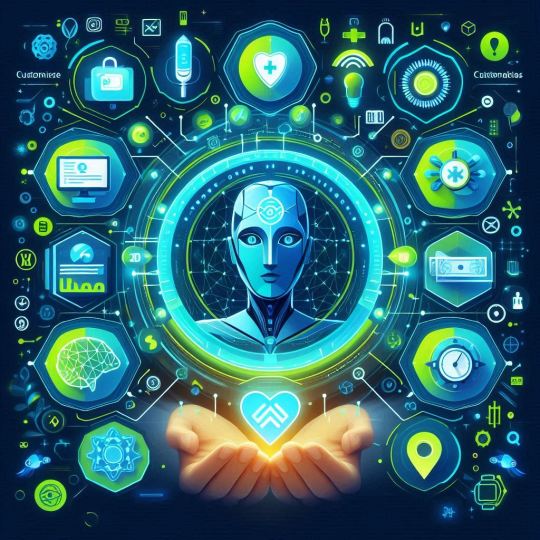
AI has found numerous applications in the healthcare industry, from diagnostics to personalized treatment plans. After all, AI-driven devices can analyze medical imaging material more accurately than humans and thus among other things help to detect diseases such as cancer at an early stage. They will also describe how AI algorithms are used to create tailored treatment strategies personalized for each patient's genetics and clinical past, which helps enable more precise treatments.
3. Edge AI
A major trend in 2024 is Edge AI It enables computer processing to be done at the edge of a network, rather than in large data centers. Because of its reduced latency and added data privacy, Edge AI can be used in applications like autonomous vehicles transportations, smart cities as well as industrial automation. Example, edge AI in autonomous vehicles is able to get and process real-time data, increasing security by allowing faster decision-making.
4. AI in Finance
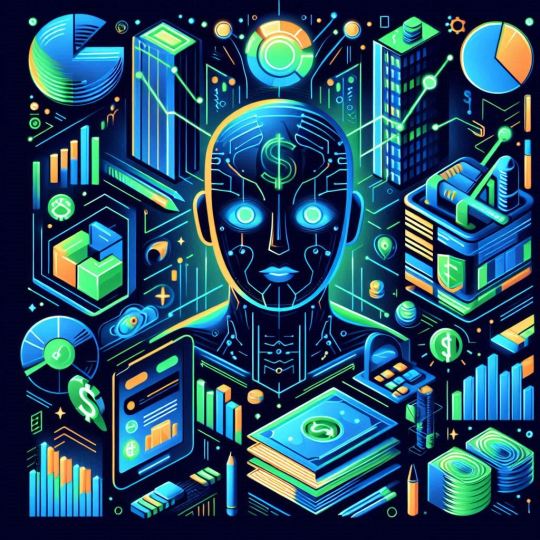
Today, the financial sector is using AI to make better decisions and provide an even stronger customer experience. Fraud detection, risk assessment and customised financial advice have introduced insurance into the AI algorithm. AI-powered chatbots and virtual assistants are now common enough to be in use by 2024, greatly assisting customers stay on top of their financial well-being. Those tools will review your spending behavior, write feedback to you and even help with some investment advices.
5. AI in Education
AI is revolutionizing education with individualized learning. These AI-powered adaptive learning platforms use data analytics to understand how students fare and produces a customised educational content (Hoos, 2017). This way, students get a tailored experience and realize better outcomes. Not only that, AI enabled tools are also in use for automating administrative tasks which shortens the time required by educators on teaching.
6. AI in Job Hunting

This is also reverberating in the job sector, where AI technology has been trending. With tools like Canyon AI Resume Builder, you can spin the best resumé that might catch something eye catchy recruiter among a dozen others applications he receives in-between his zoom meeting. Using AI based tools to analyze Job Descriptions and match it with the required skills, experience in different job roles help accelerating the chances of a right fit JOB.
7. Artificial Intelligence in Memory & Storage Solutions
Leading AI solutions provider Innodisk presents its own line of memory and storage with added in-house designed AI at the recent Future of Memory & Storage (FMS) 2024 event. Very typically these are solutions to make AI applications easier, faster and better by improving performance scalability as well on the quality. This has huge implications on sectors with substantial data processing and storage demands (healthcare, finance, self-driving cars).
Conclusion

2024 — Even at the edge of possible, AI is revolutionizing across many industries. AI is changing our lives from tailored chatbots and edge AI to healthcare, finance solutions or education and job search. This will not only improve your business profile as a freelancer who create SEO optimized content and write copies but also give your clients in the writing for business niche some very useful tips.
#ai#ai in healthcare#ai in finance#ai in wealth management#ai in business#AI trends#artificial intelligence#advanced technologies#innovation#technological advancements
4 notes
·
View notes
Text
Wooo! Geography and sustainability and stuff and stuff
When, in the course of human events it becomes necessary for one student to take upon themselves the burden of writing a very long (not really all that) academic post on a website they barely know how to use because said website was recommended to them by their actual genuine university as a blog website for an assignment.
And then said student forgets to do the assignment, falls deliriously ill, and is now finally getting round to it hilariously late and because all of their other assignments seem so, so much more difficult and mentally strenuous to do on a day where they really do not want to have to deal with that.
So, here we are. A comically large wall of poorly grammatically structured text, talking about (drumroll please) geography! More specifically "Human" geography, or Urban Geography or whatever you want to call it. It's my chosen field of study (despite my best judgement) and I've been tasked by the powers that be, to create a blog to inform and educate the nebulously defined general public about ~exciting~ developments and "Gamechanging innovations" Now, to tell the truth, this was not a particularly easy thing for me to do, because quite frankly my chosen field of study isn't really one of those ones you'd associate with constant innovation and invention, at least in my mind, but thankfully the university provided a long list of various subjects we could look at and study and then report back unto you (the reader, stand in for the entire rest of the world) about.
Small issue there, was the vast vast majority of what we were offered as potential "Gamechanging innovations" either drove me to madness with boredom, or absolutely did not seem like they were exactly "Gamechanging" (could be worse, one of the ideas offered to another discipline was the hyperloop, which is quite frankly a stupid idea that is dead in the water and could have just been normal highspeed rail)
Take, for instance, "Autonomous vehicles". Yeah. Now, suffice to say there is issues with the concept of self driving vehicles, mostly about how the technology is not exactly safe right now, and well, that's just the start of the rabbit hole there. (and really, just build a train, tram or other preferred method of public transport)
There was another one, which look promising to my untrained eye, namely "The Internet of things" which I had no idea what it was, so doing what any self respecting academic in-training would do, I googled it. Apparently, the "Internet of Things" is the catch-all term for devices that exchange and communicate data over the internet.
I'm no expert, but at an initial reading, that did just seem to be most things these days, and was hardly groundbreaking or new, so I dug a bit deeper into the scholarly side of the ole internet for some answers. Thankfully, I found a very helpful little paper (linked here) which clarified, and I quote:
"The term Internet of Things generally refers to scenarios where network connectivity and computing capability extends to objects, sensors and everyday items not normally considered computers, allowing these devices to generate, exchange and consume data with minimal human intervention. There is, however, no single, universal definition."
So it's the smart fridges, the fancy new cars and all of that lovely stuff, which buzz all of their data and such onto other devices on the internet. Now, of course my immediate thought was that it means my everything is now spying on me, but I was quickly relieved to remember that that changes effectively nothing as I do in fact own a phone which already does that.
The main benefit that seems to be proposed by this is the fact that all of this data allows rather effective monitoring of things like emissions and water quality and power usage and potentially good ole agriculture and so on and so forth, which, yeah, I can see the uses, maybe, but I can also see the glaring potential privacy, legal and potential tech issues.
A lot of people may not like their cars telling some company about where they've been all the time, and how much gas they've used. That's fair and understandable. Not to mention, the data gathered could be wrong, or otherwise rendered useless, effectively poisoning the data-well if enough things go wrong, or are just falsely reported to the public.
(It's at this point that I realise, I don't exactly know if this is quite what the uni wanted me to write, but hey, at least it's honest)
Anyway, I've overstayed my welcome in rambling about all of these things, and will be back (later) to complain/ do my assignment more, have a lovely day and remember that if you ever think about revolutionizing public transport, ask yourself if a bus or train would do the same thing, better.
#geography#human geography#academic assignments#Lot of words that don't say much#what does game changing even mean anyway?#sustainability#how do you use tumblr#I can't believe my uni told me to use this website#longish post#grammar is not my strong suit#how many tags do you add anyway
7 notes
·
View notes
Text
IIMs in India: A Comprehensive Guide to the Indian Institutes of Management
The Indian Institutes of Management (IIMs) in India are world-renowned for producing some of the most successful business leaders, entrepreneurs, and professionals. These prestigious institutions offer top-tier management education and are considered the pinnacle of business schools in India. Whether you're an aspiring MBA candidate or curious about the legacy of IIMs, this guide will help you explore all the essential details about IIMs in India.

What are IIMs?
IIMs, or Indian Institutes of Management, are autonomous public institutions offering management education programs such as the Post Graduate Program (PGP) in Management (equivalent to an MBA) and doctoral-level Fellow Programs in Management (FPM). They were established by the Indian government to enhance the quality of management education in India. The first IIM was set up in Calcutta (now Kolkata) in 1961, and today, there are 20 IIMs spread across the country.
List of Top IIMs in India
While all IIMs provide excellent education, some are considered the cream of the crop due to their history, faculty, and placement records. Here's a list of the top IIMs in India:
IIM Ahmedabad (IIMA) IIM Ahmedabad is arguably the most prestigious business school in India. It has consistently ranked as the top IIM due to its world-class faculty, rigorous curriculum, and excellent placement records. Its flagship program, the PGP, is highly sought after by students across the country.
IIM Bangalore (IIMB) Known for its lush green campus and innovative teaching methods, IIM Bangalore is another top-tier management institute. It has strong industry connections, and its focus on entrepreneurship and innovation makes it a standout choice for MBA aspirants.
IIM Calcutta (IIMC) The oldest of the IIMs, IIM Calcutta has maintained its leadership in management education for over six decades. It is known for its finance and consulting placements, making it a favorite among students who aim for careers in these sectors.
IIM Lucknow (IIML) IIM Lucknow offers a robust curriculum, and its programs in agribusiness management are unique in the IIM ecosystem. Its strategic location and strong alumni network make it a go-to institution for many MBA candidates.
IIM Indore (IIMI) Known for its integrated five-year management program (IPM) that caters to undergraduate students, IIM Indore has gained popularity among young aspirants. Its diverse course offerings and industry exposure make it one of the top choices for MBA programs in India.
IIM Kozhikode (IIMK) Situated in the scenic hills of Kerala, IIM Kozhikode combines a serene environment with cutting-edge management education. Its strong focus on technology and business analytics has made it a preferred choice for tech-savvy management students.
Admission Process for IIMs in India
The process of getting into IIMs in India is highly competitive, with the Common Admission Test (CAT) serving as the primary gateway. Here’s an overview of the admission process:
CAT Exam: Conducted annually, the CAT is a computer-based test that evaluates candidates on their quantitative aptitude, verbal ability, reading comprehension, data interpretation, and logical reasoning. Candidates must score exceptionally well to secure a spot at the top IIMs.
Shortlisting Process: After the CAT results are announced, IIMs shortlist candidates based on their CAT scores, academic performance, work experience, and diversity factors like gender and academic discipline.
Personal Interview (PI) & Written Ability Test (WAT): Shortlisted candidates are invited for the second round, which includes a personal interview (PI) and a written ability test (WAT). These rounds assess a candidate's communication skills, clarity of thought, and ability to handle business scenarios.
Final Selection: The final selection is based on a composite score that includes CAT scores, PI/WAT performance, academic background, work experience, and other criteria specific to each IIM.
Programs Offered by IIMs in India
The IIMs in India offer a variety of programs tailored to meet the needs of students, working professionals, and even international candidates. Some of the key programs are:
Post Graduate Program (PGP): The flagship two-year program, equivalent to an MBA, offered by all IIMs. It prepares students for leadership roles in the corporate world.
Executive MBA (PGPX, EPGP): A one-year full-time MBA program designed for professionals with significant work experience. It offers a fast-tracked route to career advancement.
Fellow Program in Management (FPM): This is a doctoral-level program designed for those interested in research and academics. It is equivalent to a Ph.D. in management.
Integrated Program in Management (IPM): A five-year program offered by select IIMs, such as IIM Indore, that allows students to pursue an undergraduate and postgraduate degree in management.
Career Opportunities and Placements
One of the major reasons why students aspire to join IIMs in India is the excellent placement opportunities they offer. Each year, top companies from diverse sectors like consulting, finance, marketing, operations, and technology recruit IIM graduates with lucrative salary packages.
For instance, the average salary package for IIM Ahmedabad graduates in 2023 was approximately ₹34.5 lakhs per annum, with international placements reaching even higher figures. Companies like McKinsey, Goldman Sachs, Amazon, and the Boston Consulting Group are regular recruiters across various IIMs.
The Legacy of IIMs in India
The IIMs have played a crucial role in shaping India’s business landscape. Alumni from IIMs hold leadership positions in some of the largest corporations globally, and many have gone on to establish successful startups. The strong emphasis on analytical thinking, leadership development, and ethical business practices has helped IIM graduates stand out in the competitive global marketplace.
Conclusion
IIMs in India are much more than just business schools; they are institutions that mold the future leaders of the corporate world. With a rigorous admission process, a diverse range of programs, and excellent career opportunities, IIMs continue to be the dream destination for management aspirants across the country. If you're looking to make a mark in the world of business and management, IIMs offer the perfect platform to launch your career.
Whether you're just beginning your journey or already have years of work experience, there’s an IIM program designed to fit your needs. So, are you ready to take the first step toward an exciting future in management?
#IIMs in India#career opportunities#education#higher education#educationnews#universities#colleges#admissions#mba#Post Graduate Program (PGP)#top mba colleges in india#mba colleges
2 notes
·
View notes
Text
My Contribution an ABM student to the Society
As an ABM student, I am contributing to the field of complex systems research by using Agent-Based Modeling (ABM), which simulates the behavior of autonomous agents in a specific environment. This approach allows researchers to explore complex systems and phenomena that are difficult to study through traditional experimental methods. My research focuses on understanding the dynamics of social systems, such as the spread of infectious diseases, the emergence of social norms, and the formation of social networks, by modeling the behavior of individuals and their interactions. I am actively involved in the ABM community, attending conferences, presenting my work, and collaborating with other researchers. I also contribute to the development of ABM software and tools, such as NetLogo and Repast, which are widely used in the field. As an advocate for open science, I regularly publish my work in peer-reviewed journals and make my models and data available on open repositories like GitHub and Zenodo. My goal is to advance our understanding of complex systems and contribute to the development of new methods and tools for modeling and simulation, while promoting the use of ABM in interdisciplinary research with biology, economics, and sociology.
2 notes
·
View notes
Text
Jorge Urrutia Galicia: A Mexican Pioneering Mathematician And Computer Scientist

Jorge Urrutia Galicia is a Mexican computer scientist and mathematician.
Galicia is best known for his work on geometry. He made contributions to many different areas of mathematics, including discrete geometry, discrete optimization, and computational geometry. His specialty in computational geometry has made him recognized as one of the leading researchers worldwide. His research has also focused on combinatorial optimization, which is related to combinatorial game theory.
His early works dealt with problems of separability and visibility, a field in which he is an indisputable authority. While it is clear that mathematics has always played a basic role as the underlying foundation of all technology, especially now, and in this case it is confirmed why the technological scope of Dr. Urrutia’s articles in routing is significant; suffice to mention just one: recently algorithms are being implemented based on the ideas of Dr. Urrutia, to make communication networks that can be used in case of natural disasters.
Since the end of the 20th century, he began to work on routing problems, developing algorithms for both the combinatorial and geometric problems, which literally founded a work area of great importance in its application to wireless and cellular networks. In the 21st century, Dr. Urrutia has also stood out for his numerous contributions to the study of discrete sets of points, on which he has made decisive contributions, both in their solution and formulating various variants.
Dr. Jorge Urrutia Galicia studied a bachelor’s degree in mathematics at the Faculty of Sciences of UNAM from 1971 to 1974, and a master’s and doctoral degree in mathematics at the University of Waterloo, Canada from 1976 to 1980. He has worked at the Metropolitan Autonomous University-Iztapalapa, CIMAT, Carleton University, Ottawa University from 1984-1998, where he was "full professor", and since 1998 at the Institute of Mathematics of the UNAM. On average, he teaches five courses each year (two undergraduate and three postgraduate courses).
Annually, he organizes at least two research workshops in Mexico, one of its main objectives being that its students know and work with renowned researchers and learn to collaborate with them as equals.
From 1990 to 2000, he was editor-in-chief of the journal Computational Geometry, Theory and Applications, published by Elsevier Science Publishers. He has been a member of the editorial boards of the Mexican Mathematical Society Bulletin and of Graphs and Combinatorics (Springer, and Computational Geometry: Theory and Applications (Elsevier). He was also editor of the Handbook of Computational Geometry (2000), one of Elsevier's first published handbooks.
He has published more than 270 articles in conference proceedings and research journals in mathematics and computing, which have received more than 6,000 citations, among the most important are two articles on routing in ad-hoc and wireless networks, which have received more than 2 600 citations together: “Compass Routing in Geometric Graphs” and “Routing with Guaranteed Delivery in Ad Hoc Wireless Networks.” In these investigations, Dr. Urrutia develops new strategies – highly efficient – to send information on wireless networks that take advantage of the characteristics obtained by recent technologies such as GPS, in addition to allowing them to travel through these networks effectively without having knowledge of their topology. It is worth mentioning that in 2012 he was the most cited mathematician of the UNAM.
He has given more than 40 plenary lectures at international congresses on Computational Geometry. He was editor-in-chief of "Computational Geometry, Theory and Applications" from 1990 to 2000. He has supervised more than 55 bachelor, master and doctoral theses.
In 2015, he received the "National University in Research in Exact Sciences" award at UNAM. He is is a member of the National System of Investigators, Level 3 He has organized and participated in the organizing committees of several national congresses including the "Victor Neumann-Lara Colloquium on Graphic Theory and its Applications", the "Canadian Conference on Computational Geometry", the "Japan Conference on Discrete and Computational Geometry" and the "Computational Geometry Meetings" (Spain). Oher countries where he has also participated in this way are Italy, Indonesia, Philippines, China, Canada, Peru and Argentina, as well as his home country, Mexico.
Source: (x) (x) (x)
#🇲🇽#STEM#Jorge Urrutia Galicia#mexico#UNAM#mathematics#geometry#computer science#mexican#latino#hispanic#discrete optimization#combinatorial game theory#natural disaster#technology#wireless network#cellular#Metropolitan Autonomous University-Iztapalapa#CIMAT#Carleton University#Ottawa University#Institute of Mathematics#Elsevier Science Publishers#Mexican Mathematical Society Bulletin#National University in Research in Exact Sciences#canada#europe#spain#japan#italy
4 notes
·
View notes
Text
“Patriotic” programs and events have been popping up all over Russian-occupied Ukrainian territory. The entities behind these endeavors are often “autonomous nonprofit organizations”: organizations purportedly characterized by their socially beneficial, cultural, educational, scientific, or charitable nature. They also aren’t governmental — at least officially. At the end of 2023, journalists from Delfi Estonia gained access to leaked documents from Putin’s administration. When a team of journalists from Meduza, iStories, Expressen, Frontstory.pl, Paper Trail Media, Der Spiegel, ZDF, Der Standard, VSquare.org, and Tamedia studied the documents, they discovered evidence that the Kremlin directly funds and controls many of these so-called “autonomous” organizations. Meduza summarizes the findings in English.
This article is part of the Kremlin Leaks project. The first story in the series can be found here.
‘Autonomous’ in name only
Leaked documents from Putin’s administration list 15 “autonomous nonprofit organizations” (ANOs) that receive state funding. Despite their official status, there’s no hint of autonomy: all of the organizations were created by people close to the Russian authorities, and the Kremlin fully controls their work. Moreover, all of them are actively involved in creating and disseminating state propaganda.
ANOs have proven particularly convenient for the Kremlin since the start of its full-scale war against Ukraine as they’re not bound by government procurement laws. In 2023, these organizations received subsidies from the state budget totaling 59 billion rubles (about $639 million and exactly two times the annual budget of Ingushetia, one of the poorest regions in Russia).
Perhaps the most well-known of these ANOs is the Internet Development Institute, which finances the production of Russian films, TV series, and other cultural content (often with a pro-government bent). Another nonprofit organization, Dialog, is charged with spreading Internet propaganda and fabricating disinformation, specifically about the war in Ukraine.
Several other ANOs organize “patriotic” events. For instance, Russia is a Country of Opportunities, created at Putin’s initiative, conducts competitions and Olympiads for students — including in Russian-occupied Ukrainian territory. According to the leaked documents, from 2023 to 2025, Putin’s administration intends for about 20 percent of people ages 14–25 in the occupied territories to participate in events run by the organization.
This isn’t the only ANO the Kremlin uses as an on-the-ground tool for its propaganda efforts in Ukraine. For example, the Center for the Development of Cultural Initiatives holds the Tavrida cultural festival in Russian-annexed Crimea. In addition to live musical performances, programs like these inevitably include propaganda lectures and meetings with “veterans” of Russia’s war in Ukraine. ANOs take varied approaches to “integrating” residents of the “new regions”: the World Youth Festival brings volunteers from the occupied territories to Sochi, the Mashuk Knowledge Center “retrains” teachers from occupied Ukrainian regions, and the Center for the Study and Network Monitoring of the Youth Environment keeps a close watch on students’ social media in order to “promptly inform about emerging threats and new, destructive phenomena.”
The documents also mention an organization that’s less widely known: the Integration production center, which was created in May 2022 and is controlled by the Presidential Fund for Cultural Initiatives. The center is headed by Gleb Shagun, the former chief producer and general director of state news channel RBC-TV. A former colleague described him as “a careerist” and “a company man masquerading as a liberal.”
In 2018, Shagun was in charge of public communications for annexed Sevastopol’s Kremlin-backed government. A local journalist, who spoke to Meduza on condition of anonymity, characterized Shagun as a “batshit PR guy” for then-governor Dmitry Ovsyannikov. “He banned everything and everyone and engaged in smear campaigns against the governor’s enemies. Which is to say, against all local politicians,” he said.
Unlike other Kremlin ANOs, Shagun’s “production center” doesn’t get money from the state budget. Rather, it relies on “donations” from state and private companies. (This is common practice for NGOs connected to the authorities.)
In late 2022, Integration received over 100 million rubles (about $1 million) from RusHydro, one of Russia’s largest energy companies. It got another 100 million from JSC Dalgiprotrans, a major transport and infrastructure design company in Russia’s Far East (and part of “king of state orders” Alexey Krapivin’s 1520 group). Mosgiprotrans, one of Russian Railways’ largest contractors, also contributed a similar amount. Integration’s total budget is unknown.
Getting their money’s worth
Integration doesn’t have a website, and there’s virtually no information on it in open sources. However, judging by the leaked Kremlin documents, it produces so-called “public opinion leaders” (teachers, pop stars, etc.) who then promote a state-sanctioned agenda. Integration liaises between the Russian authorities and these “public opinion leaders” and takes care of their funding.
One document lists several Integration projects, including the so-called “agitbrigade” (propaganda brigade) of Russian celebrities who visit the military to boost morale. The “agitbrigade” is the brainchild of Sergey Kiriyenko, the Kremlin’s domestic policy czar, as Vedomosti has already reported. Some notable “agitbrigade” members include actors Sergey Bezrukov, Mikhail Porechenkov, and Sergey Garmash, musicians Sergey Galanin and Denis Maidanov, comedian Yevgeny Petrosyan, and chess player Sergey Karjakin.
Integration also helped musicians Oleg Gazmanov, Alexander Rosenbaum, and Yulia Chicherina raise funds for military formations in the self-proclaimed “Donetsk People's Republic” and “Luhansk People's Republic,” promoted pro-Russian German director Wilhelm Domke-Schulz’s projects, and developed numerous pro-Kremlin Telegram channels — including that of Alexander Malkevich, who produces propaganda media in Russian-occupied Ukrainian territories.
The center also financed the “Russian Dream” movement, recently created by Alexander Prokhanov — a Stalinist, “patriotic” Russian writer, and editor-in-chief of Zavtra, a newspaper that openly embraces the state’s “imperial ideology.” Oleg Rozanov, a member of the pro-government ultra-conservative Izborsk Club, is chairman of the board.
Additionally, Integration is involved in the administration’s campaign for the upcoming Russian presidential elections. In particular, it’s tasked with creating “a database of Russian Science and Education Ministry employees who meet the relevant criteria.” (Which criteria the document is referring to is unclear.) The center is also supposed to “monitor the political sentiments and electoral preferences” of education professionals and students.
However, these aren’t Integration’s only functions. Several employees of state- or government-loyal media said Putin’s administration has been “requesting” that editors at their publications take comments from pro-government experts through the center. According to them, each media outlet is assigned a specific Integration employee to whom they can send the topic of an article and specific questions. In response, they receive a written comment from one of the “public opinion leaders” with whom Integration works.
One employee of a Kremlin-loyal media company believes this helps the ANO mint “new media experts.” “It's convenient in principle. There’s no need to bother with calls: you write a request, you get a quick answer,” he says. “However, often you don’t know whose comment you’ll get. Sometimes they send no-names; sometimes they send quite media-savvy and well-known individuals.”
Another interviewee adds that centralizing the work this way allows Putin’s administration to control already loyal media even further — and to prevent journalists and experts from getting too close, where an expert might share something off the record. “Of course, this wouldn’t be published, but the journalists themselves might start to think and reflect. And this is hardly in the authorities’ interests.”
iStories and Meduza sent inquiries to RusHydro, Mosgiprotrans, Dalgiprotrans, and the Presidential Fund for Cultural Initiatives but did not receive a response. Gleb Shagun, Denis Maidanov, Yevgeny Petrosyan, Sergey Karjakin, Oleg Gazmanov, Sergey Galanin, Sergey Bezrukov, Mikhail Porechenkov, and Yulia Chicherina also did not respond to requests for comment.
0 notes
Text
Exploring the Future: Emerging Technologies Shaping Our World
The world of technology is in a constant state of evolution, and it's an exciting journey into the future. As we navigate the 21st century, we find ourselves surrounded by emerging technologies that promise to reshape our lives in profound ways. From artificial intelligence (AI) to virtual reality (VR) and beyond, the future is brimming with innovations that hold the potential to transform industries, improve our daily routines, and challenge our perceptions of what's possible. In this blog post, we'll take a closer look at some of these groundbreaking technologies and the impact they may have on our future.
Artificial Intelligence (AI): The Power of Machine Learning
AI, often described as the pinnacle of human achievement in technology, is already making waves across various industries. Machine learning algorithms are becoming increasingly sophisticated, enabling AI systems to analyze vast datasets, make predictions, and perform tasks that were once reserved for human experts. As AI continues to advance, we can expect to see its applications in healthcare, finance, autonomous vehicles, and even creative fields like art and music composition. AI-driven personal assistants and chatbots will become more intelligent and seamlessly integrated into our daily lives, making our interactions with technology more intuitive and efficient.
Virtual Reality (VR) and Augmented Reality (AR): Immersive Experiences
Virtual reality and augmented reality are revolutionizing the way we experience entertainment, education, and even work. VR immerses users in virtual worlds, while AR overlays digital information onto the physical world. These technologies are poised to redefine the way we learn, play, and connect with others. In education, students can explore historical events or distant planets through immersive VR experiences. In healthcare, surgeons can use AR to visualize patient data during surgery. The gaming industry continues to push the boundaries of VR, providing gamers with unparalleled levels of immersion. As hardware becomes more accessible and affordable, VR and AR will undoubtedly become integral parts of our lives.
5G Connectivity: The Backbone of the Internet of Things (IoT)
The rollout of 5G networks is another milestone in our technological journey. With speeds that dwarf those of 4G, 5G will unlock the full potential of the Internet of Things (IoT). Smart cities will become a reality, with connected devices and sensors optimizing everything from traffic flow to energy consumption. Telemedicine will thrive with low-latency connections, enabling remote consultations and surgeries. The way we work will transform, with remote collaboration tools benefiting from seamless, high-speed connectivity.
Sustainable Technology: A Greener Future
As we grapple with the challenges of climate change, technology is stepping up to provide solutions. Renewable energy sources like solar and wind power are becoming more efficient and affordable. Electric vehicles (EVs) are rapidly gaining popularity, and self-driving EVs promise to revolutionize transportation. Innovations in sustainable agriculture, such as vertical farming and precision agriculture, are increasing food production while minimizing environmental impact. These advancements in green technology are crucial steps toward a more sustainable and environmentally friendly future.
Conclusion
The future of technology is bright, filled with promise, and limited only by our imagination. As these emerging technologies become more integrated into our lives, they will undoubtedly bring about profound changes in the way we work, learn, communicate, and interact with the world around us. Embracing these innovations and staying informed about the latest developments will empower us to thrive in the dynamic landscape of the future. So, fasten your seatbelts, because the journey into the future of tech promises to be an exhilarating one, and we're just getting started.
#auto tech#future_tech#technology#tech news#security#tech house#software#retro tech#tips#witch tips#tech
2 notes
·
View notes
Text
"Unveiling the Future: How Data Science is Revolutionizing Upcoming Industries"
Data science continues to have a substantial impact on various industries, and its scope is expected to expand as new technologies emerge and businesses realize the potential of data-driven insights. Here are some upcoming industries where data science is likely to play a significant role:
Healthcare and Life Sciences: Data science can aid in personalized medicine, drug discovery, predictive analytics for patient outcomes, and healthcare operations optimization.
Financial Services: Financial institutions use data science for fraud detection, risk assessment, algorithmic trading, customer behavior analysis, and credit scoring.
Retail and E-Commerce: Data science helps optimize inventory management, pricing strategies, recommendation systems, and customer segmentation for targeted marketing.
Energy and Utilities: The energy sector benefits from data analytics for smart grid management, predictive maintenance of equipment, and energy consumption optimization.
Manufacturing: Data science improves manufacturing processes through predictive maintenance, quality control, supply chain optimization, and demand forecasting.
Agriculture: Precision agriculture utilizes data science to optimize crop yield, resource allocation, pest control, and environmental monitoring.
Transportation and Logistics: Data science plays a role in route optimization, fleet management, demand forecasting, and autonomous vehicles.
Telecommunications: Data science assists in customer churn prediction, network optimization, and personalized service offerings.
Media and Entertainment: Content recommendation, audience segmentation, and analyzing viewer engagement are areas where data science is making an impact.
Real Estate: Data science helps in property price prediction, market trend analysis, and investment decision-making.
Environmental Conservation: Data science aids in monitoring and analyzing environmental data, including climate patterns, pollution levels, and habitat preservation.
Education: Data science can personalize learning experiences, assess student performance, and optimize educational resources.
Government and Public Services: Data-driven decision-making is becoming increasingly important for optimizing public services, policy formulation, and resource allocation.
Insurance: Insurers use data science for risk assessment, claims processing, fraud detection, and customized pricing.
Travel and Tourism: Data science enhances traveler experiences through personalized recommendations, pricing optimization, and destination insights.
Pharmaceuticals: Data science plays a role in drug discovery, clinical trials optimization, and pharmacovigilance.
Smart Cities: The concept of smart cities involves integrating data science for efficient urban planning, traffic management, energy consumption, and public services.
Cybersecurity: Data science helps in identifying and responding to cyber threats by analyzing patterns and anomalies in network data.
As technology continues to advance and businesses recognize the value of data-driven insights, certybox is creating a difference in providing the top professional courses along with job assistance. It's essential for professionals in the field to stay updated with the latest developments and tools to make the most of these opportunities.
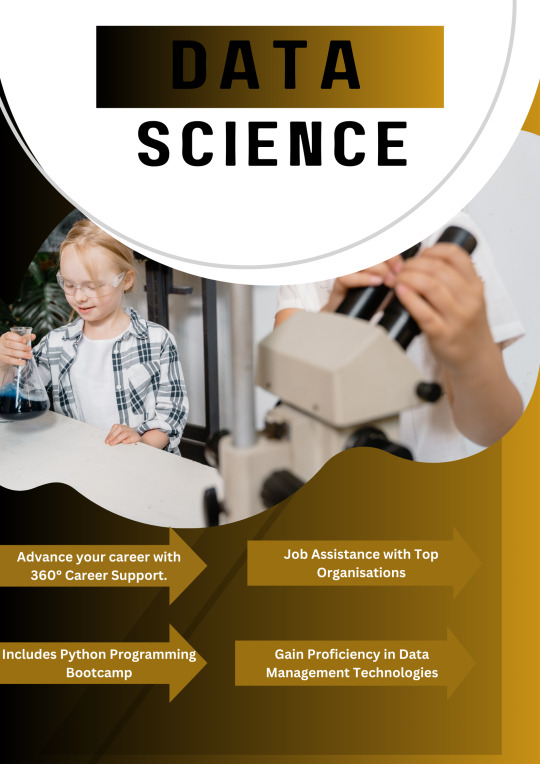
5 notes
·
View notes
Text
Artificial Intelligence (AI) Tutorial: A Complete Beginner’s Guide
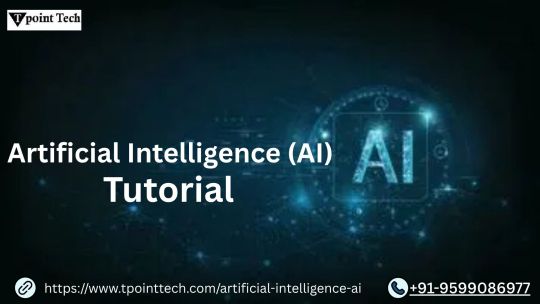
Artificial Intelligence (AI) Tutorial: A Complete Beginner’s Guide
Artificial Intelligence (AI) is transforming the way we live, work, and think. From virtual assistants like Siri and Alexa to recommendation systems on Netflix and Amazon, AI is deeply embedded in modern life. If you're new to this exciting field and want to understand what AI is, how it works, and how to get started, you're in the right place. This Artificial Intelligence (AI) Tutorial: A Complete Beginner’s Guide is designed to introduce you to the fundamentals of AI, its applications, and the tools you need to start your AI journey.
What is Artificial Intelligence (AI)?
Artificial Intelligence is a branch of computer science that focuses on building systems capable of performing tasks that typically require human intelligence. These tasks include problem-solving, learning, reasoning, language understanding, and perception. AI can be categorized into two types:
Narrow AI – AI systems that are trained for a specific task (e.g., facial recognition, email filtering).
General AI – A theoretical system that could perform any intellectual task a human can do.
In real-world scenarios, we mostly use Narrow AI. However, research is ongoing to achieve General AI, which would represent a massive leap in computing and cognitive science.
Why Learn AI?
AI is one of the fastest-growing and most impactful technologies in the world. Learning AI can open up vast career opportunities in fields like:
Data Science
Machine Learning
Robotics
Natural Language Processing (NLP)
Computer Vision
Automation and Cybersecurity
Companies around the globe are investing heavily in AI, and demand for AI professionals is skyrocketing. Whether you're a student, software developer, or tech enthusiast, learning AI can significantly boost your career.
Core Concepts of Artificial Intelligence
To effectively understand AI, you need to grasp several key concepts that form the foundation of the field:
1. Machine Learning (ML)
Machine Learning is a subset of AI where machines learn from data without being explicitly programmed. ML algorithms allow systems to identify patterns, make decisions, and improve over time with more data.
There are three types of machine learning:
Supervised Learning
Unsupervised Learning
Reinforcement Learning
2. Neural Networks and Deep Learning
Inspired by the human brain, neural networks are algorithms designed to recognize patterns. Deep Learning uses complex neural networks with many layers, enabling applications like image and speech recognition.
3. Natural Language Processing (NLP)
NLP allows machines to understand and respond to human language. Applications include chatbots, voice assistants, and language translation tools.
4. Computer Vision
This area focuses on enabling machines to “see” and interpret images or videos. It's used in facial recognition, medical imaging, and autonomous vehicles.
5. Robotics
AI-powered robots are designed to perform complex tasks in real-world environments. These range from industrial automation to surgical procedures.
Tools and Technologies for AI
Getting started with AI requires familiarity with certain tools and programming languages:
Python – The most popular language for AI due to its simplicity and vast libraries (TensorFlow, Keras, Scikit-learn).
R – Useful for statistical analysis and data visualization.
Jupyter Notebooks – Ideal for writing and sharing live code, visualizations, and narratives.
Frameworks and Libraries:
TensorFlow – Google’s open-source library for numerical computation and large-scale machine learning.
Keras – A user-friendly deep learning API, built on top of TensorFlow.
PyTorch – A deep learning framework developed by Facebook, known for its flexibility and speed.
OpenCV – A library for computer vision tasks.
Real-World Applications of AI
AI is not just a theoretical concept—it powers many technologies we use daily:
Healthcare – AI diagnoses diseases, predicts patient outcomes, and personalizes treatment plans.
Finance – Fraud detection, algorithmic trading, and customer service automation.
Retail – Product recommendations, demand forecasting, and customer behavior analysis.
Transportation – Self-driving cars, route optimization, and logistics automation.
Education – Personalized learning paths and AI tutors.
Step-by-Step Roadmap for Beginners
Here’s a beginner-friendly path to start your AI journey:
Step 1: Learn Python
Start with Python programming. It’s the foundation of most AI projects. Learn basics like data structures, functions, loops, and file handling.
Step 2: Understand Math for AI
Focus on linear algebra, probability, statistics, and calculus. These are essential for understanding how AI algorithms work.
Step 3: Learn Machine Learning
Explore supervised and unsupervised learning. Understand models like regression, decision trees, clustering, and classification.
Step 4: Work on Projects
Apply your knowledge with small projects like:
Sentiment analysis
Image classifier
Spam detection
Chatbot
Step 5: Explore Deep Learning and NLP
Once comfortable with ML, move to deep learning frameworks like TensorFlow or PyTorch. Learn about neural networks and try building models for image or speech recognition.
Step 6: Stay Updated
AI is evolving rapidly. Follow blogs, take online courses, read research papers, and participate in communities like GitHub, Stack Overflow, and Kaggle.
Recommended Resources
Online Courses: Coursera, edX, Udemy, freeCodeCamp
Books:
"Artificial Intelligence: A Modern Approach" by Stuart Russell & Peter Norvig
"Deep Learning" by Ian Goodfellow
Communities: Reddit r/MachineLearning, AI Stack Exchange, GitHub projects
Conclusion
Artificial Intelligence is revolutionizing industries and reshaping the future. This Artificial Intelligence (AI) Tutorial: A Complete Beginner’s Guide provides a solid foundation to begin your AI learning journey. With the right tools, resources, and dedication, anyone can start building smart systems and be a part of the AI-driven transformation.
Now is the perfect time to dive into AI and become part of this technological revolution. Start small, stay curious, and keep learning—your AI journey begins today!
Let me know if you'd like this content turned into a blog post format with headings, images, or code examples!
0 notes
Text
Information Technology Colleges in Bangalore
Bangalore, often called the Silicon Valley of India, is not just the hub of tech giants and startups; it's also home to some of the country’s best Information Technology (IT) colleges. Whether you're aiming to pursue a B.Tech, BCA, MCA, M.Tech, or a PGDM, IT, or related fields, Bangalore offers a wide range of academic choices backed by excellent infrastructure, faculty, and placement support.
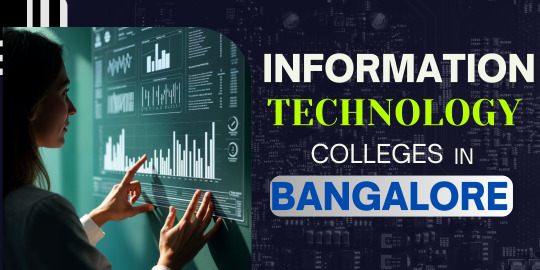
Why Choose Bangalore for IT Education?
Proximity to top tech companies like Infosys, Wipro, TCS, and hundreds of startups.
Internship and placement opportunities with real-world industry exposure.
Access to cutting-edge curriculum with the latest tech like AI, ML, Cybersecurity, Cloud Computing, and more.
A vibrant student community and tech events, hackathons, seminars, and coding bootcamps.
Top IT Colleges in Bangalore (2025 List)
Here’s a curated list of some of the top InformationTechnology colleges in Bangalore you should consider:
1. International Institute of Information Technology, Bangalore (IIIT-B)
Known for research and innovation.
Offers M.Tech, MSc (Digital Society), and Ph.D. programs.
Excellent academic-industry collaboration.
2. RV College of Engineering (RVCE)
Offers B.E. in Information Science and Engineering.
Top recruiters: Microsoft, Adobe, IBM.
Strong alumni network and placement support.
3. PES University
Offers B.Tech and M.Tech in Computer Science and IT.
Modern campus, project-based learning approach.
High placement packages and global exposure.
4. BMS College of Engineering
Accredited and autonomous institute.
Offers specialized IT and CSE courses.
Strong ties with tech companies and research centres.
5. IIBS (International Institute of Business Studies)
Offers BCA/CA and PGDM programs with modern IT labs.
Industry-focused curriculum with emphasis on soft skills.
Affordable fee structure and personalized career guidance.
6. Christ University
Offers BCA, MCA, and B.Tech in IT & CSE.
Known for discipline, modern teaching methods, and placement support.
7. Dayananda Sagar College of Engineering
Offers B.E./M.Tech in Information Science.
Known for its practical approach and technical workshops.
Career Opportunities After IT Courses
Studying IT in Bangalore opens doors to several career paths:
Software Developer / Full Stack Developer
Data Analyst / Data Scientist
Cybersecurity Specialist
Cloud Architect
DevOps Engineer
AI/ML Engineer
With the booming tech ecosystem in Bangalore, you're never too far from landing your dream job.
Final Thoughts
If you're passionate about technology and looking for the right launchpad for your career, Bangalore’s IT colleges offer the perfect blend of academic excellence and industry readiness. Choose wisely based on your interests, budget, and long-term goals, and get ready to power your future in the heart of India’s tech capital!
#leadership#management#internationalstudies#leadershipdevelopment#riskmanagement#Colleges#IT#informationtechnology#business#bangalore#colleges#courses
0 notes
Text
Top Data Science Courses Online India with AI & ML Specialization
In today’s data-driven world, the demand for skilled professionals in data science, artificial intelligence (AI), and machine learning (ML) is higher than ever. Whether you're a student, a working professional, or someone looking to transition into tech, enrolling inData Science Courses Online India is the smartest way to equip yourself with future-ready skills.
With a surge in AI and ML applications—from chatbots and recommendation engines to autonomous systems and predictive analytics—employers are specifically looking for data scientists who understand the power of AI and ML.
In this blog, we’ll explore the top Data Science courses online in India that specialize in AI and ML, along with what to look for in a program, benefits, and how to choose the right one based on your goals.
Why Choose Data Science Courses Online in India with AI & ML Focus?
Before diving into the top programs, it’s essential to understand why specialization in AI and ML makes a difference:
High Demand: AI and ML jobs are among the fastest-growing globally. According to LinkedIn’s Emerging Jobs Report, “Machine Learning Engineer” and “AI Specialist” have seen a 74% annual growth rate.
Better Salary Prospects: Professionals with AI/ML expertise earn 30–50% higher salaries than those with general data science knowledge.
Real-World Applications: AI/ML is driving innovation in fintech, healthcare, e-commerce, manufacturing, and more.
Future-Proof Career: The synergy of data science with AI/ML is the backbone of modern digital transformation.
Now, let’s look at some of the top Data Science Courses Online in India that offer specialization in AI and ML.
Boston Institute of Analytics – Advanced Data Science & AI Program
Overview: Boston Institute of Analytics (BIA) offers one of the most comprehensive Data Science Courses Online in India, specially designed with a strong focus on AI and ML. The program blends practical tools, project-based learning, and globally recognized certifications.
Key Highlights:
Modules on Python, R, SQL, Deep Learning, TensorFlow, NLP, and Computer Vision
Real-world AI projects and machine learning case studies
Live interactive classes with industry mentors
Placement assistance with top tech firms
Option to choose part-time or weekend batches for working professionals
Why Choose BIA? With an impressive placement record and globally reputed faculty, BIA is one of the best options for learners looking to gain hands-on expertise in data science, AI, and ML.
What to Look for in a Data Science Course with AI & ML?
When choosing a Data Science Course Online in India, ensure it includes:
✅ Comprehensive Curriculum: It should cover Python, ML algorithms, AI models, deep learning, and NLP. ✅ Hands-on Projects: Look for programs offering real-time AI/ML projects or industry use-cases. ✅ Experienced Faculty: Check if the course is taught by industry practitioners or academic experts. ✅ Placement Support: Career mentorship, interview prep, and job referrals are key. ✅ Flexible Learning: Online access, recorded lectures, and part-time options matter for working professionals.
Benefits of Online Learning in India
The shift to online education has made data science and AI education accessible to learners across India. Here are a few advantages:
Learn from Anywhere: No need to relocate to metro cities like Bangalore or Mumbai.
Cost-Effective: Online courses are often cheaper than in-person classes, with financing options.
Access to Global Mentors: Learn from industry leaders, no matter where they are.
Community Support: Online discussion forums and peer networks offer collaborative learning.
Real-Life Career Opportunities After Completing These Courses
After completing a data science course with AI/ML specialization, you can pursue roles like:
Data Scientist
Machine Learning Engineer
AI Research Scientist
Data Analyst with AI Specialization
NLP Engineer
Deep Learning Developer
These roles exist across domains such as finance, e-commerce, edtech, healthcare, and logistics, offering salaries ranging from ₹8 LPA to ₹25 LPA or more, depending on experience and portfolio.
Final Thoughts
As the demand for data-driven decision-making continues to grow, equipping yourself with AI and ML specialization through a Data Science Course Online in India is a future-proof investment.
Courses like those from Boston Institute of Analytics stand out for their comprehensive, practical, and career-oriented curriculum. Whether you are a fresh graduate or a professional aiming to transition into AI roles, choosing the right course can define your success.
Take the first step now — choose a course that matches your career aspirations, learning style, and industry demand.
#Best Data Science Courses Online India#Artificial Intelligence Course Online India#Data Scientist Course Online India#Machine Learning Course Online India
0 notes